Plant Profiles dive deep on one plant variety each month. They are meant to provide you with enough information to make good growing decisions. A desire to grow gorgeous flowers is one thing. However, discerning if a particular plant is right for you and your climate is a whole other ballgame.
My intention here is to give you as much practical information to make these decisions. However, I’m going one step further and taking you completely behind the scenes to share exactly what has worked for us as well. For this reason, Plant Profiles are broken up into what I’m calling the “Nuts and Bolts (N&B)” and “Behind the Scenes (BTS).”
If you haven’t already, please be sure to read the FFY Introduction to learn more about how Plant Profiles are organized.
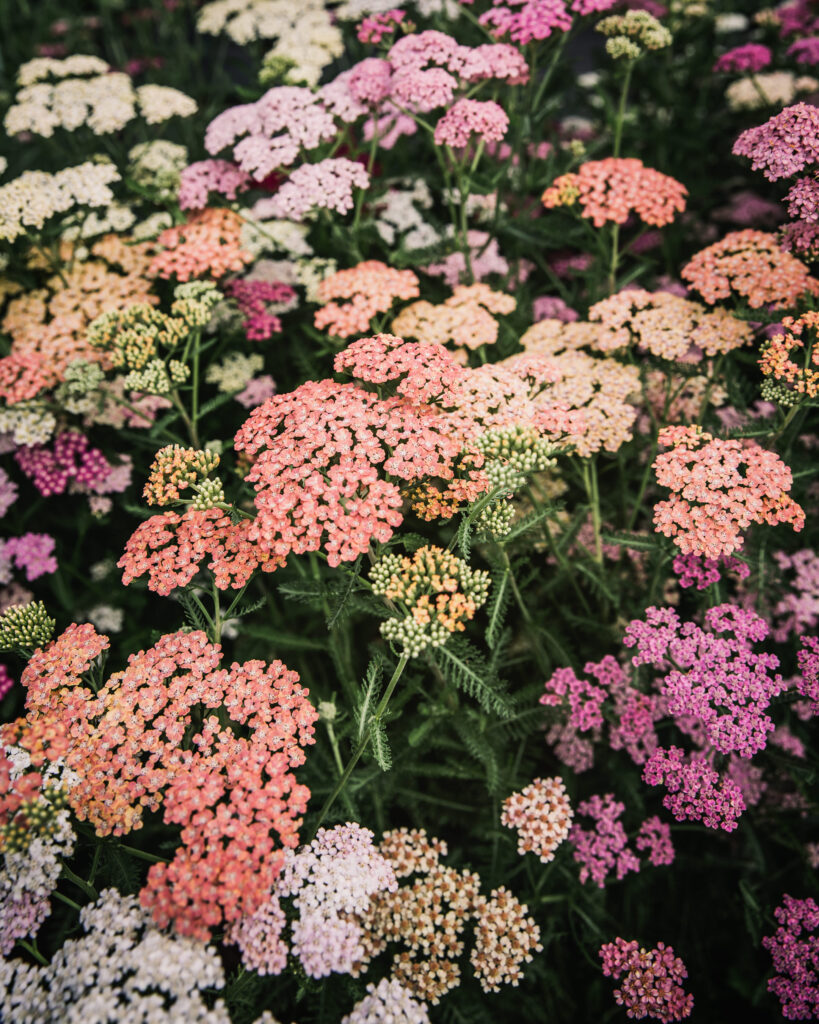
Primary Sources
The primary sources for the N&B portion come from:
- Postharvest Handling of Cut Flowers and Greens: A Practical Guide for Commercial Growers, Wholesalers & Retailers (Dole, Stamps, Carlson, et al).
- Specialty Cut Flowers, 2nd Edition, Revised & Enlarged (SCF): Industry standard for both new and experienced growers on the production of annuals, perennials, bulbs, and woody plants for fresh and dried cut flowers (Allan M. Amritage and Judy M. Laushman)
- Johnny’s Selected Seeds (Johnny’s): Johnny’s has been in the business for 50 years, with a research farm dedicated to finding the best seeds and tools for farmers and gardeners
- BOSTON Ornamental Terminal Prices. Specialty Crops Market News Federal – State Market News Service, USDA (as of 14-FEB-2023
- Yarrow: The Wounded Healer’s Herb. A Plant Monograph (Walcott). Berkeley Herbal Center.
Zone Considerations
- Johnny’s Selected Seeds research farm is located in Zone 5a Maine
- My farm, Petal Back Farm, is located in Zone 4b Wisconsin
General Information: N&B
- Latin Name Name: Achillea millefolium
- Common Name: Common yarrow
- Origin: Native to parts of western Asia and the Balkans
- Days to Maturity: 120–130 days
- Life Cycle: Perennial Zones 2–9
- Spacing: 9–24″
- Height: 28–36″
While yarrow from Europe and Asia was originally introduced to America in colonial times, it has now naturalized throughout the U. S. It is a mat-forming herbaceous perennial in zones 2–9. Plants spread rapidly and beds fill in within 2 years. It is highly productive and easily propagated. Yarrow is fabulous as a cut flower, as well as dried. It is easy to grow and harvest and is an excellent filler for bouquets and arrangements.
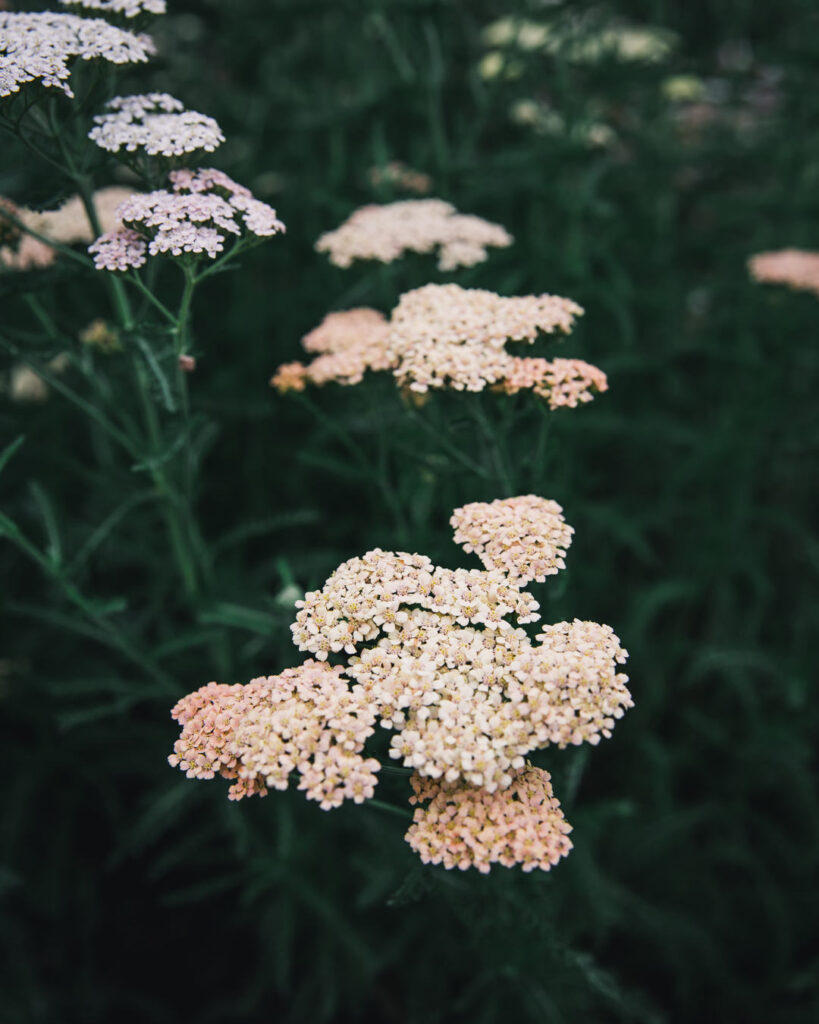
General Information: BTS
I cannot imagine a season without this fabulous filler. In fact, we *almost* named our dog “Yarrow” instead of “Poppy,” but her personality was just much-more poppy, ha! As you may know, I have a deep love of growing many plants, including herbs (and maybe you do too!). In fact, I did a collaboration with The Herbal Academy last year on yarrow. I often choose flowers not only for their aesthetic qualities, but also for their energetic properties. Yarrow is a “protective plant, providing psychic shielding from outside negative influences. It is good for sensitive people that can absorb other people’s energies and become depleted. Yarrow helps to strengthen one’s sense of self (Walcott).”
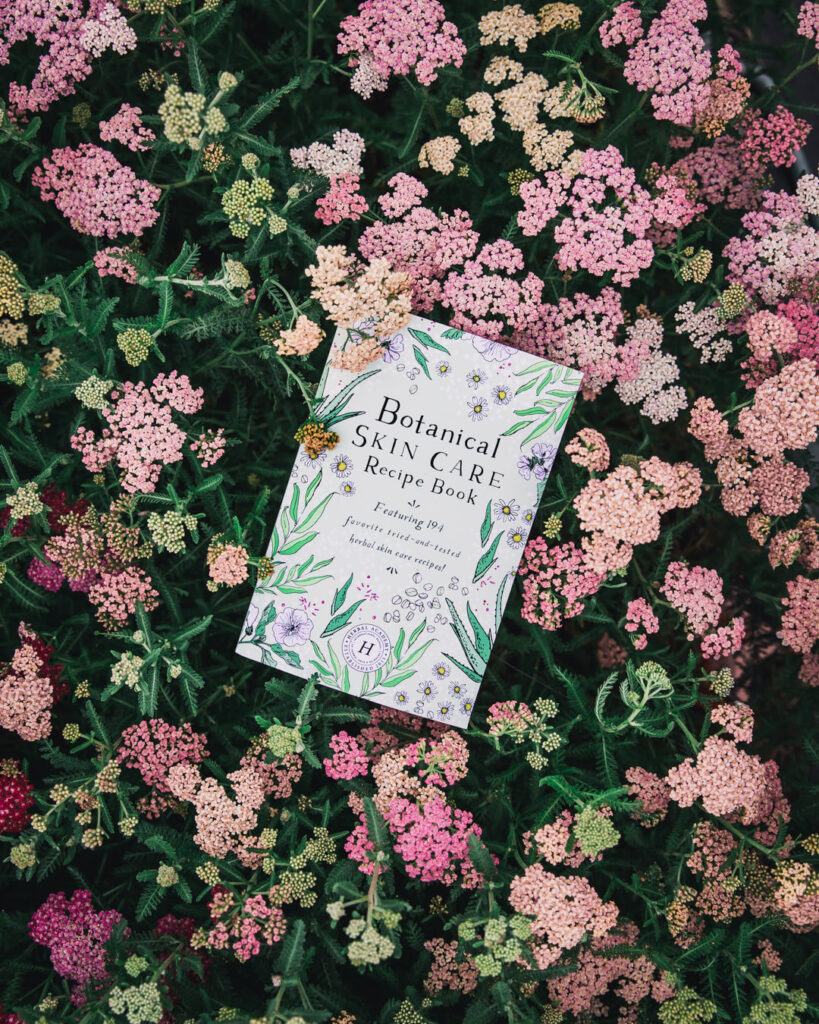

What I love most about snaps as a cut flower:
- Easy to grow and harvest
- Good vase life
- Upright stems
- Blends well with other flowers
- So easy for design
- Popular with customers
- Prolific
- Attracts pollinators
- Medicinal herb
- Can be dried
- Pest/disease resistant
But every rose has its thorn, right? Potential shortcomings:
- Scent (but I like it, ha!)
- May wilt of picked too early
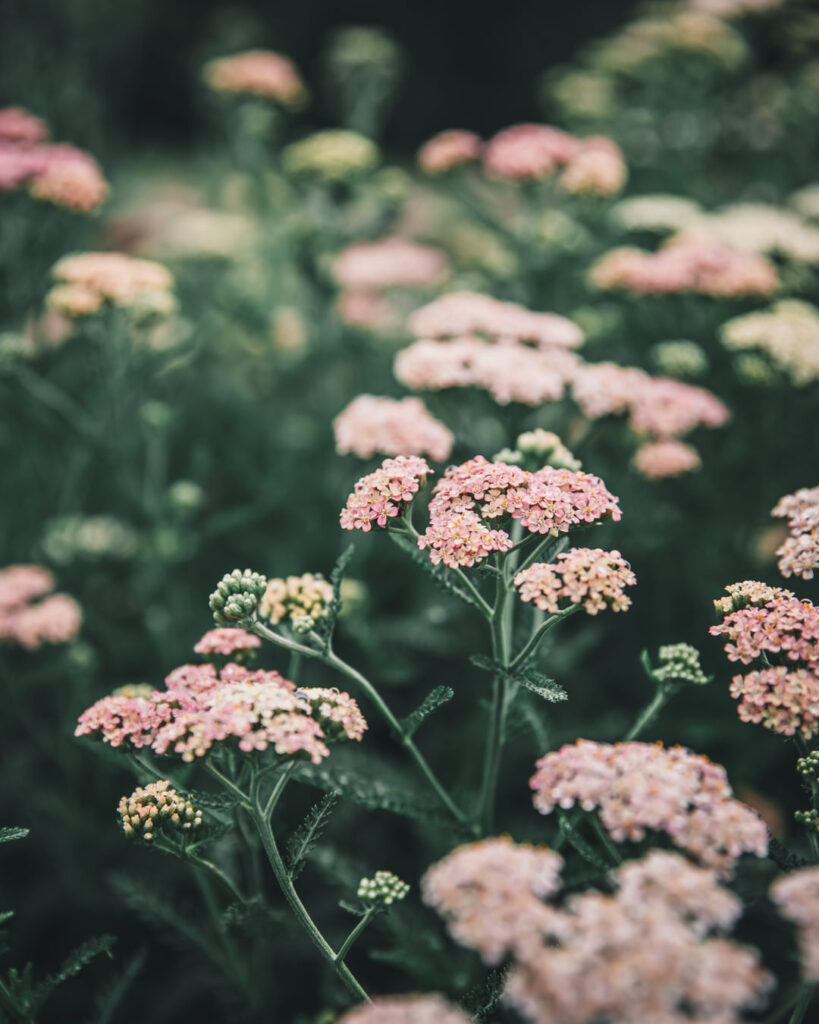
Propagation: N&B
Yarrow can be grown from seed, cuttings, or root divisions. Johnny’s recommends sowing seeds 8-10 weeks before planting out. Light is required for germination. Cover seeds with a thin layer of vermiculite to retain moisture and hold seeds in place. Approximately 3-5 weeks at 55-65F (13-18C) in full light are ideal conditions for seedling development. Harden off seedlings and transplant outdoors.
Yarrow may be divided at any time but in early spring or immediately after flowering is best. A 2- to 3-year old plant yields hundreds of single crown divisions (SCF). Divide every 3-4 years to maintain vigor (Johnny’s).
Propagation: BTS
We grow our yarrow from seed, sown in 72-cell trays. I do not bump them up, they go straight into the field at this size. I have a few patches that could probably benefit from divisions . . . maybe this year🙂 I find yarrow is most productive in year 2.
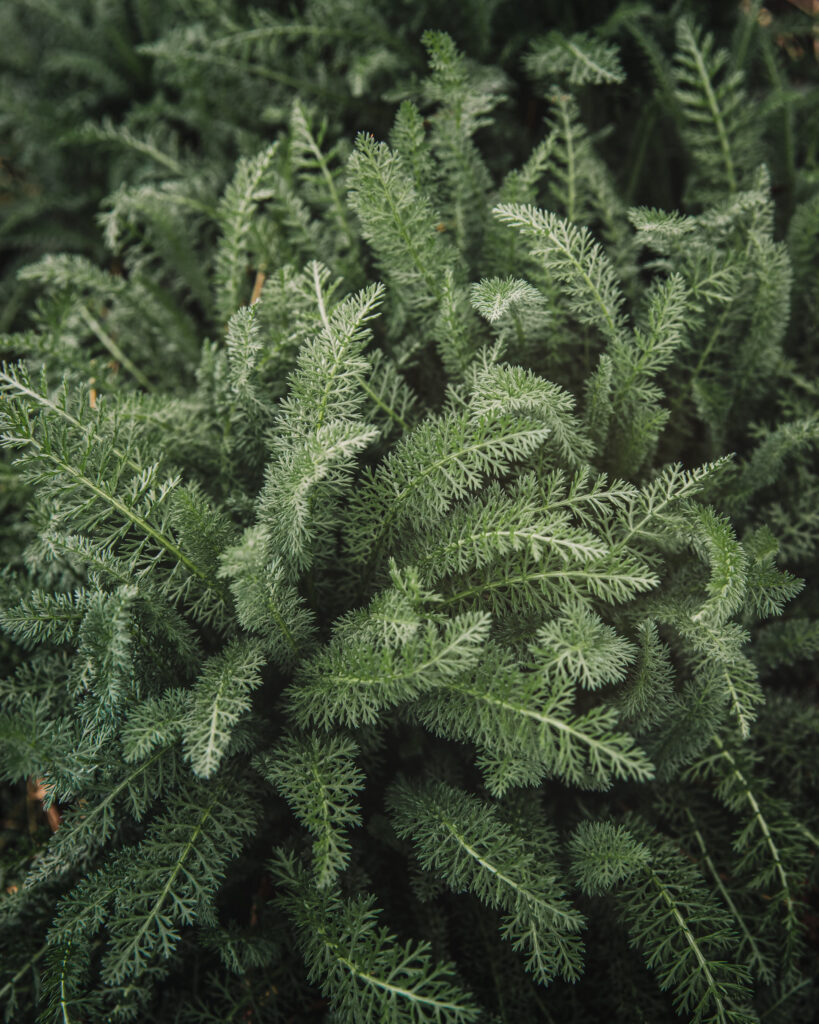
Environmental Factors: N&B
While cold is not necessary for flower development, 3–4 weeks of 40F (4C) may contribute to uniformity and stem quality. Cool night temperatures enhance flower color and stem strength. According to SCF, yarrow can be grown in the south, but it’s generally of higher quality in the north (I figure this is worth noting but yarrow seems to be quite widely adapted and it handles our hot summers just fine). For some varieties like ‘Summer Pastels’ long days are required for flowering (SCF). It likes sun but can handle partial shade.
Environmental Factors: BTS
We’ve grown yarrow in the field as well as the high tunnel. The high tunnel was an experiment planted two years ago, simply because I love yarrow and was attempting to see if I could get a longer harvest. The problem is that Poppy (our new puppy) trampled through the patch, so the jury is still out. I don’t think the harvest time will differ that much, since I prefer the pastel mixes, which require long days for flowering.
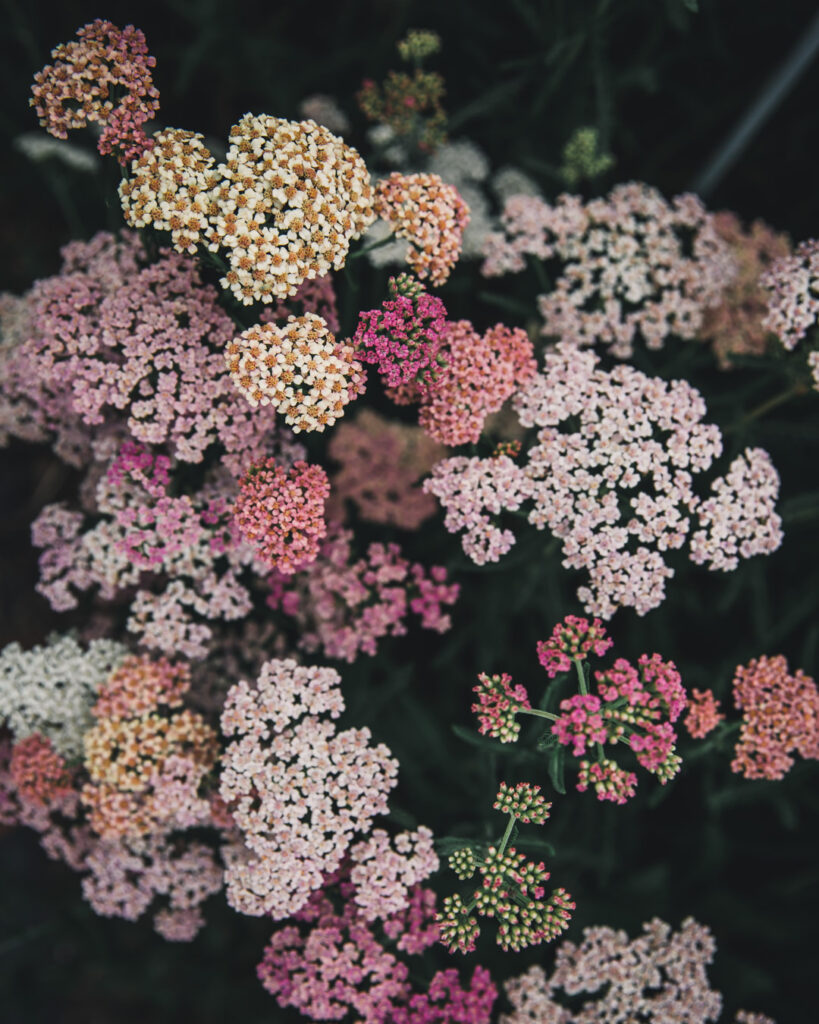
Transplanting, Spacing, Support: N&B
Transplant yarrow once hardened off. Space plants 9–24″ apart. SCF found that any semblance of spacing in their trials disappeared at year 3, even spaced at 36″, due to how quickly yarrow spreads. Work in Italy showed planting less than 12″ was not as productive. They concluded that 12″ spacing was optimum. Yarrow may require support with many growers opting for netting.
Transplanting, Spacing, Support: BTS
We transplant our yarrow at 9″ spacing, because that’s what the back of a Floret Seed packet said when I started🙂. Our yarrow is super productive so far as I can tell, but I may experiment with 12″ spacing based on the research above.
I don’t use netting on yarrow. Does it fall down sometimes? Yes, but I really dislike netting. Now, that said, the yarrow in the tunnel was a total mess, even after Poppy trampled through it. It grew so tall I had to corral it to try and reign it in. So, netting might be necessary in the future and something that should be considered.
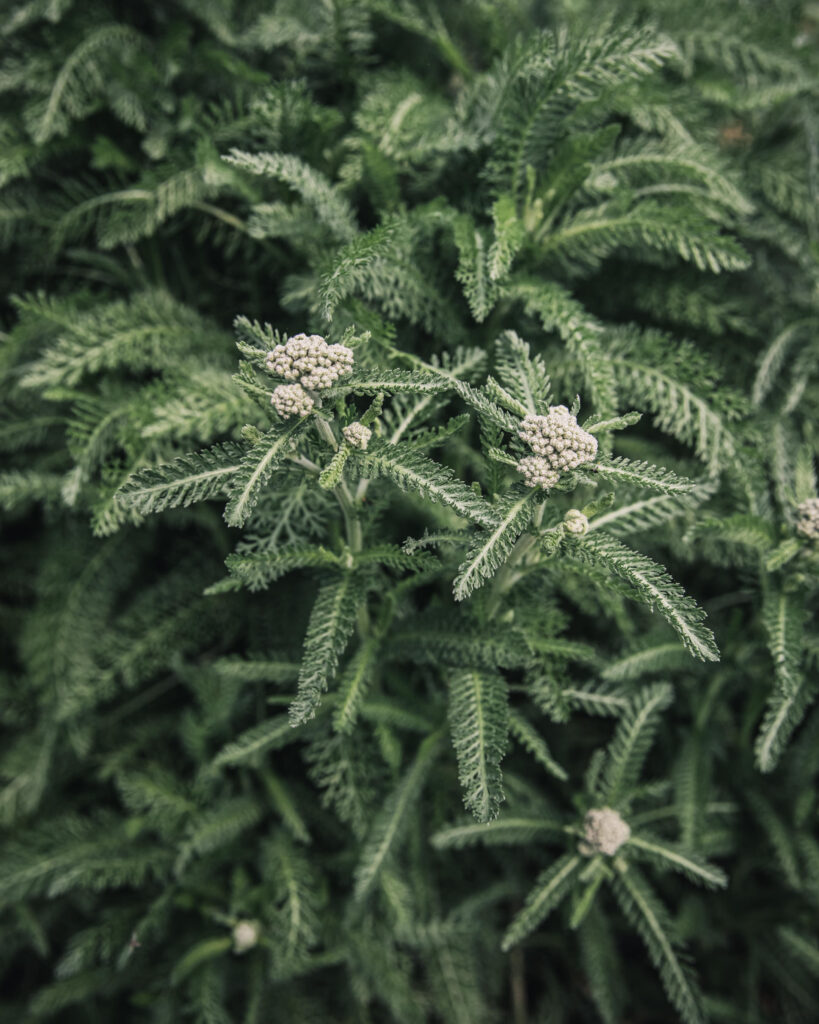
Successions: N&B & BTS
Because yarrow is a perennial, it’s not typically succession planted (or at least I do not know anyone who plants it this way). While you’ll usually get a few flowers in year 1 (depending on how early planted), it really takes off in year 2, and then will starts to decline in year 3. Divide every 3-4 years to maintain vigor.
Nutrition: N&B
So long as soil is at normal levels, yarrow requires little additional fertilizer. High rates of nitrogen result in rapid vegetative growth at the expense of flowers.
Nutrition: BTS
We fertilize our fields organically based on soil tests, and we do not fertilize for each crop individually. I have an eBook that outlines exactly how we do this. I’ve made that available for you here.
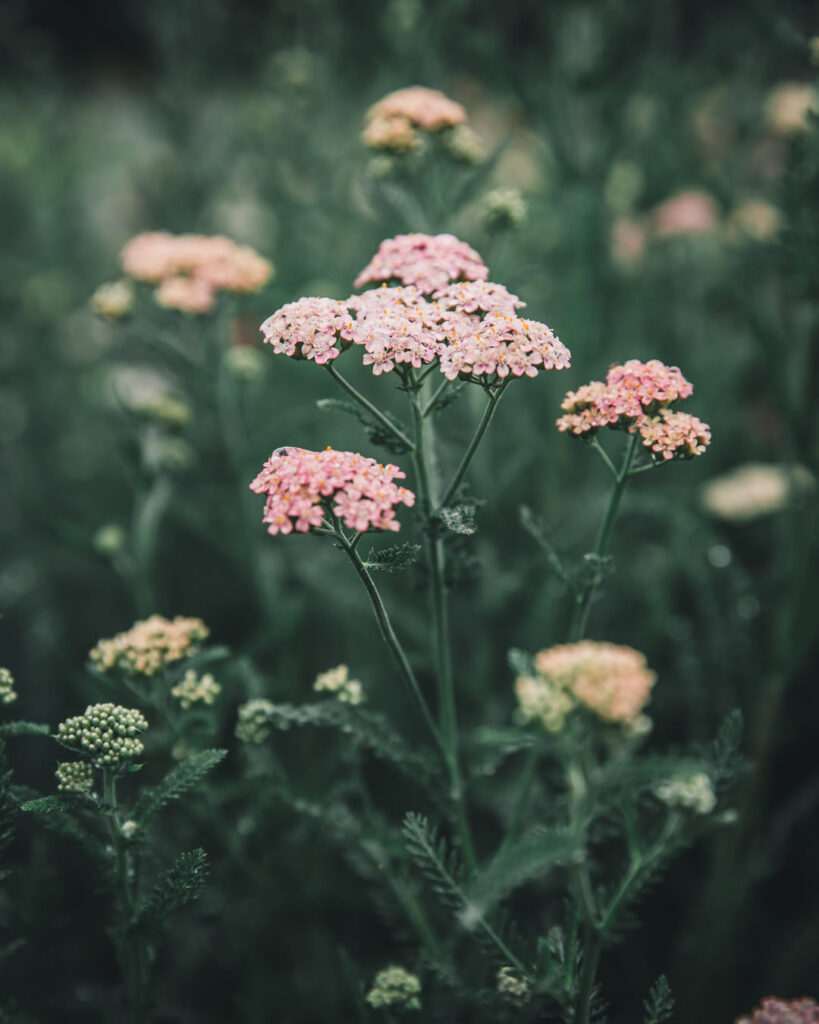
Drainage & Irrigation: N&B
Yarrow will benefit from moisture while getting established, but it should be planted in well-draining soil. Once established, it can handle dry conditions.
Drainage & Irrigation: BTS
At our farm, we have gossil-loamy sand, meaning that our soil is more sand than loam. It actually drains excessively to the point of leaching nutrients. Our biggest difficulty is keep plants irrigated, especially in dry spells. For this reason, we do have drip irrigation installed on all of our beds at the home farm.
However, as noted above, yarrow is one of the few plants that can handle our dry conditions. We still water it, but yarrow grows wild all around the farm in dry, sandy locations. In fact, for making hydrosols and essential oils, this is preferred because you tend to get more of the blue oil. Yes, the oil is blue, it’s really cool! You can see in the photo of hydrosol that even the hydrosol is light blue (the oil itself is dark blue).
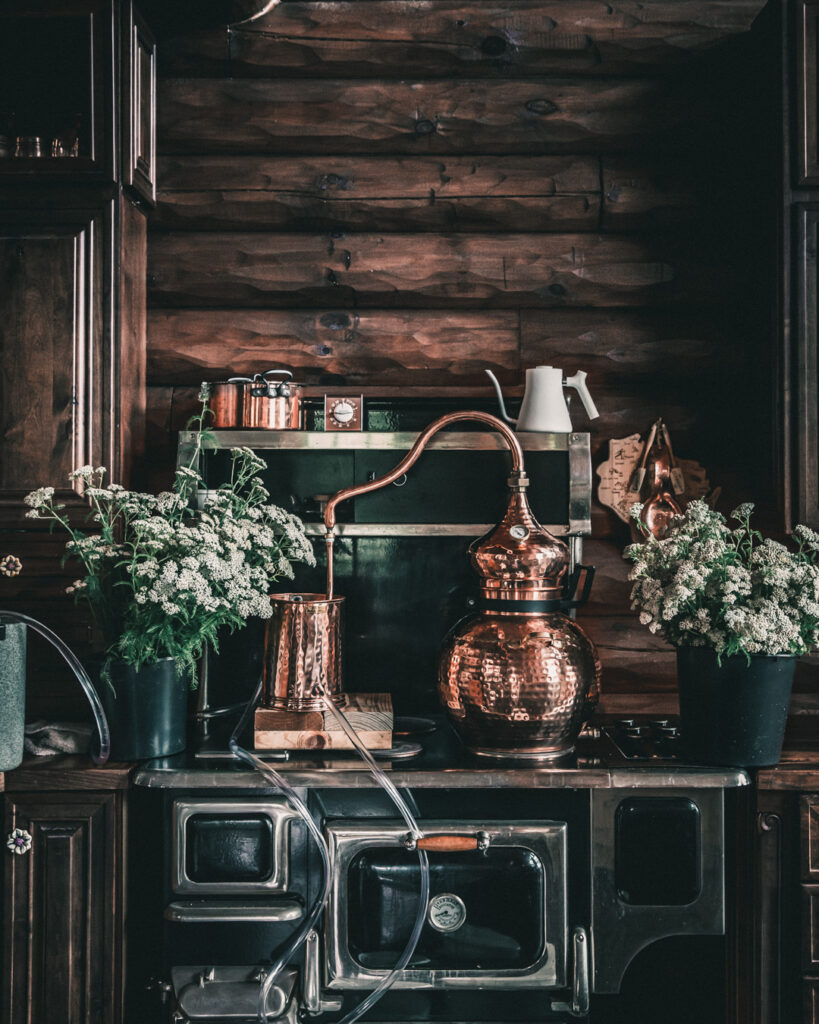
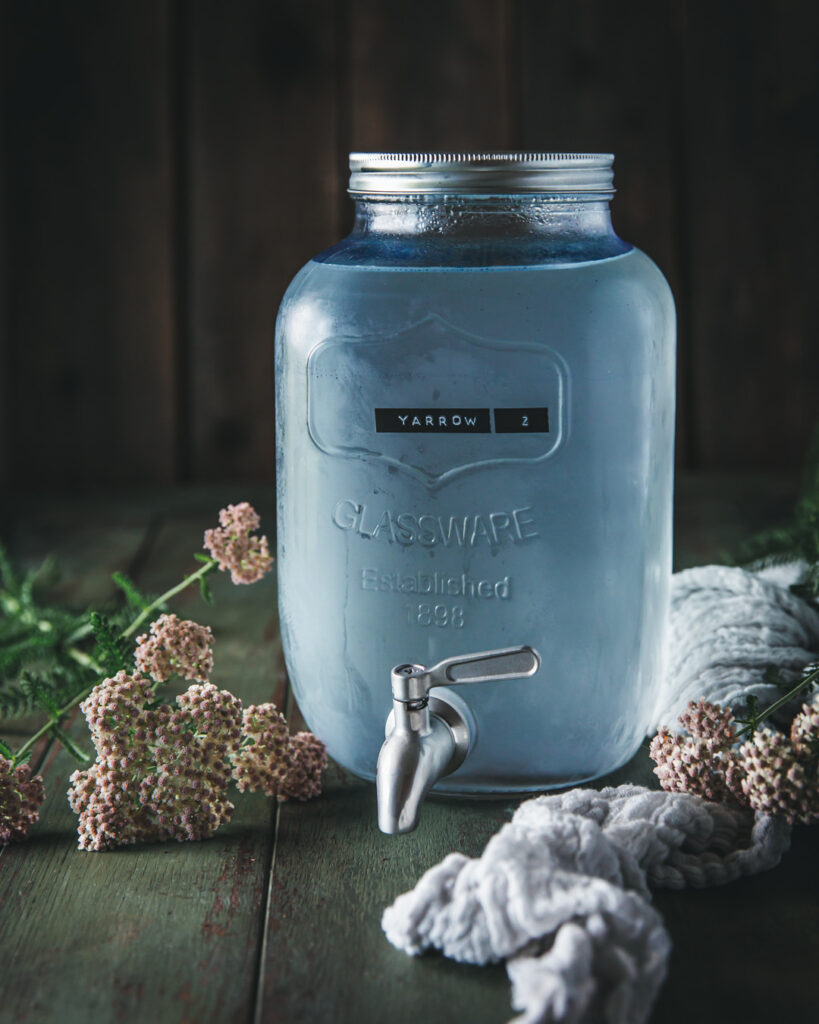
Pinching: N&B and BTS
Plants do not need to pinched.
Bloom Period: N&B
Bloom period can be anywhere from late spring to late summer, depending on variety and geographical location.
Bloom Period: BTS
We typically have yarrow June through mid summer. This makes them a perfect bridge filler between spring and summer flowers (but also can be used well into summer).
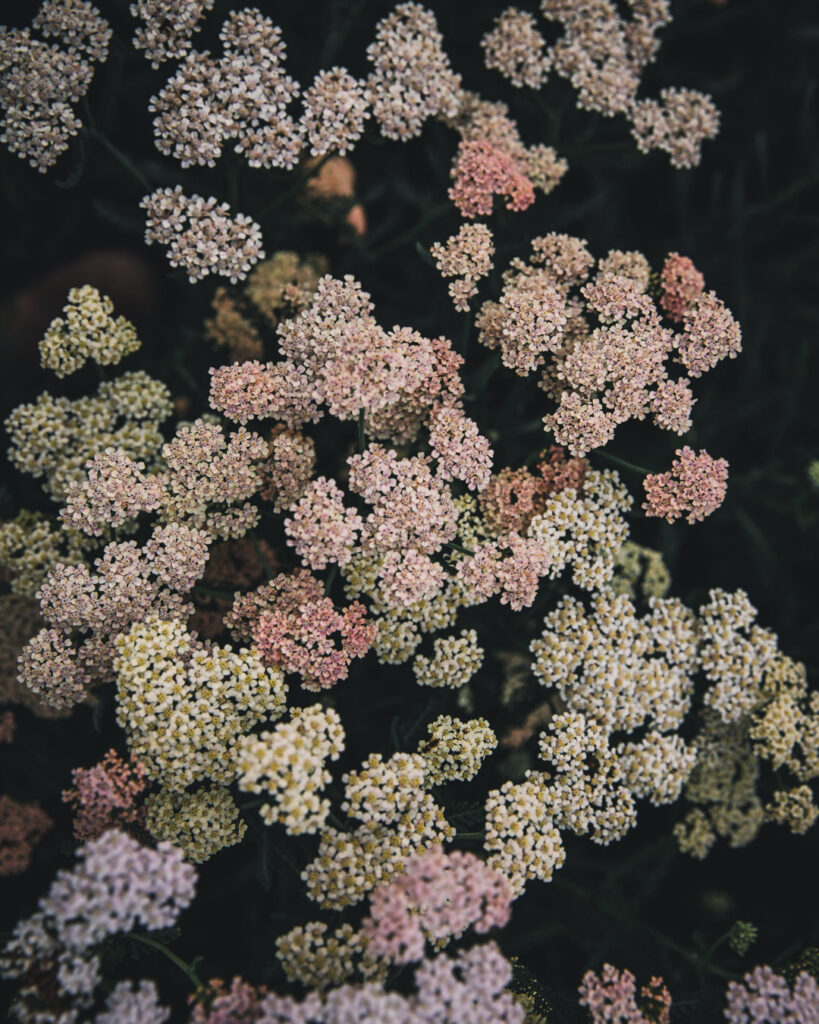
Overwintering: N&B
Yarrow is a perennial and can be overwintered in most areas, Zones 2–9.
Overwintering: BTS
We’ve never had any issue with yarrow overwintering.
Harvest & Post-Harvest: N&B
Harvest when florets on a stem are at least 3/4 open and pollen is showing. If cut too early, stems will wilt. Expected vase life of 6 to 8 days on average. Long-term storage is not recommended, and researh has shown that 36F (2C) for a week reduced vase life. Holding preservatives will lengthen vase life and slow-release chlorine tablets are beneficial as yarrow is considered a “dirty flower” (Postharvest Handling).
Harvest & Post-Harvest: BTS
We harvest as recommended above. The “wiggle test” that’s often used for zinnias kind of works for yarrow too. I once read that yarrow is best harvested in the evenings. However, for the life of me, I cannot find the literature for this, so I’m adding it to the BTS portion. Because yarrow does not like long-term storage, it’s typically one of the last flowers we cut for the week. Typically, we’ll cut it the evening before designing.
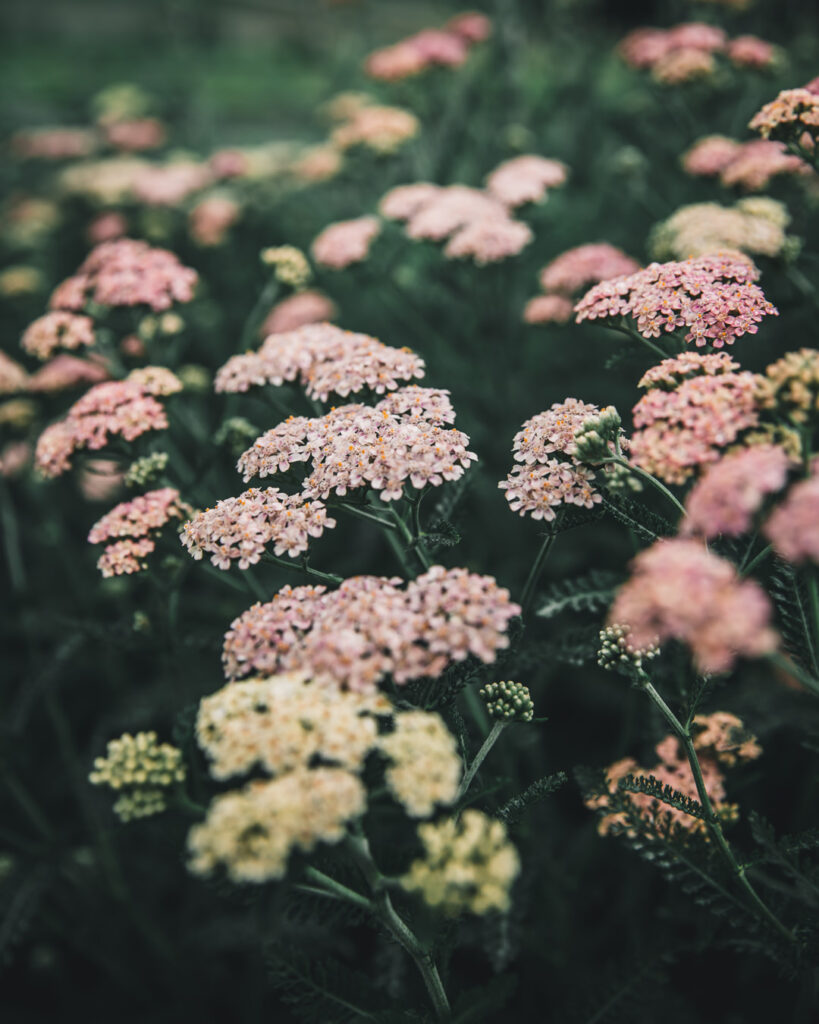
Pests & Disease: N&B
Yarrow isn’t particularly susceptible to pest or disease issues. However, it can have mold, rot, or mildew issues in soil that does not drain well. Some growers report occasional aphids, thrips, and mealy bugs.
Pests & Disease: BTS
We’ve never had any issues with yarrow. I suspect that, much like feverfew, it’s herbal scent deters pests but attracts beneficials. Yarrow attracts SO many beneficial pollinators (it makes my heart happy).
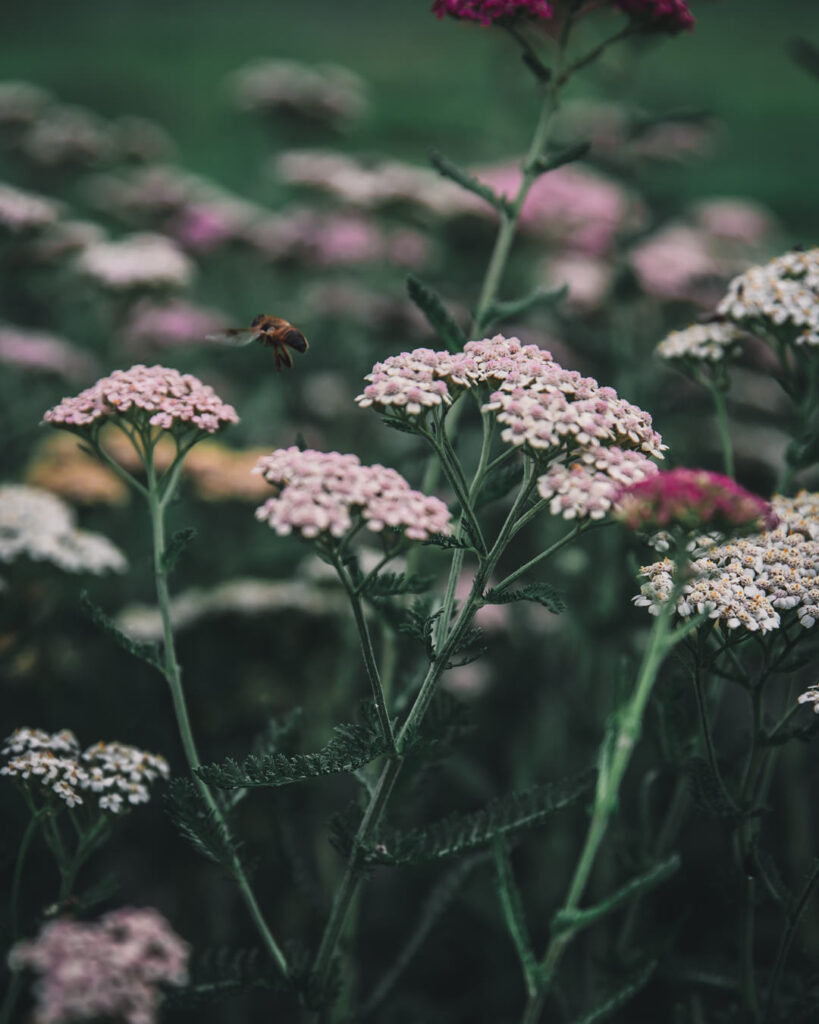
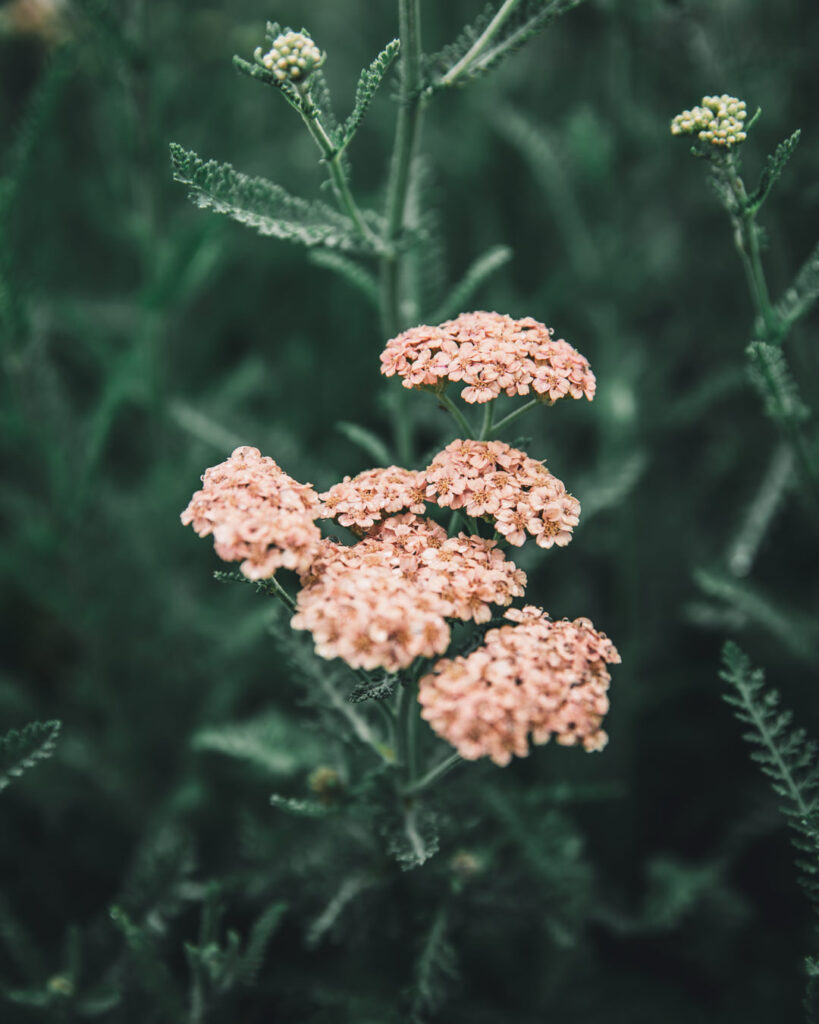
Variety Selection: N&B
There are many cultivars available from seed, but variability is reportedly quite great. Most seed companies tend to lean toward the hybrid mixes, which have longer, stronger, and straighter stems.
Variety Selection: BTS
Much like feverfew, yarrow is another plant I don’t go hog wild on varieties. I stick to the pastel mixes like “Summer Pastels” or “Summer Berries.”
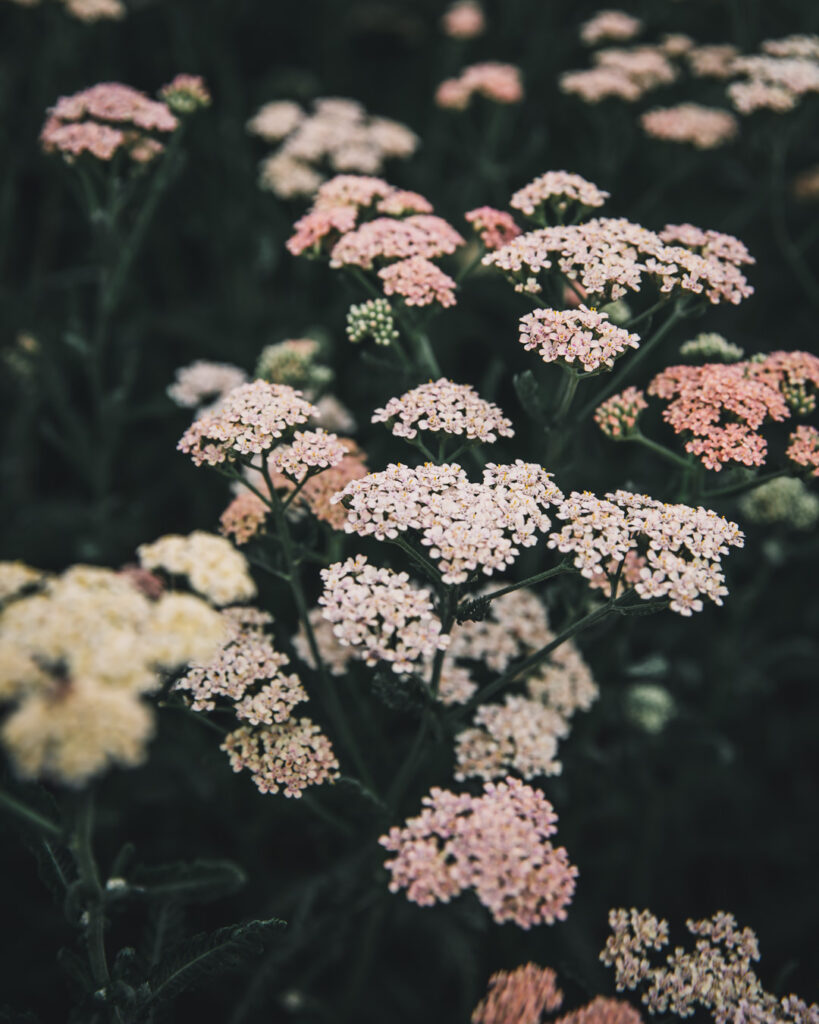
Pricing: N&B and BTS
BOSTON Ornamental Terminal Prices as of 26-DEC-2023:
YARROW: MARKET STEADY. per bunch CA long 10.00 EC long 10.00
$10 is also my florist price. I don’t typically sell yarrow by the bunch for retail, but I use it in market bouquest and design whenever I can.
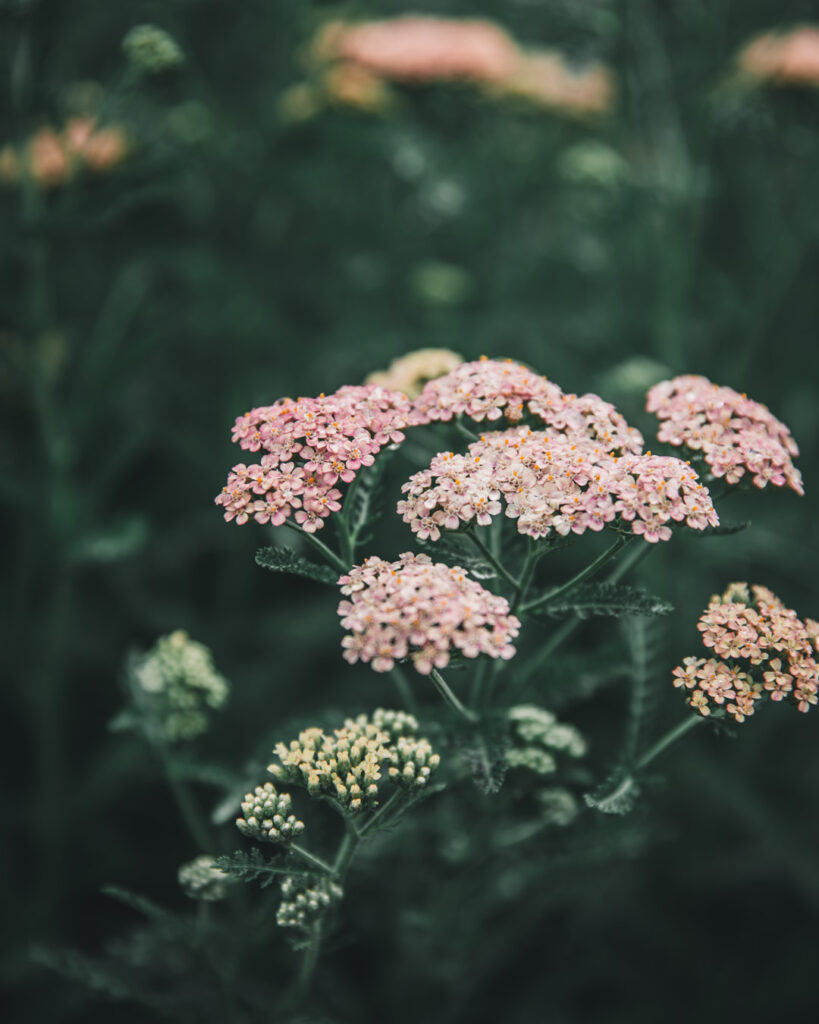
Design: BTS only
Oh my goodness, I LOVE yarrow for design! While the whole design thing is still a work in progress for me, those little dainty flowers are just so romantic. Also, it’s *super* easy to work with because it just fits in everywhere. Unfortunately, my photos don’t really do it justice, but they’re tucked in if you look close. Kind of like a nice little surprise. In fact, I’m often surprised how often people ask about it.
Gabriela Salazar once described yarrow as flowing flower mounds throughout a centerpiece (heart swoon). I also love using using them in bridal bouquets and market bouquets. Yarrow is a perfect bridge between focal flowers like peonies and spikes like snapdragons. It just tucks right in like little pillows of sweet mini florets 🙂
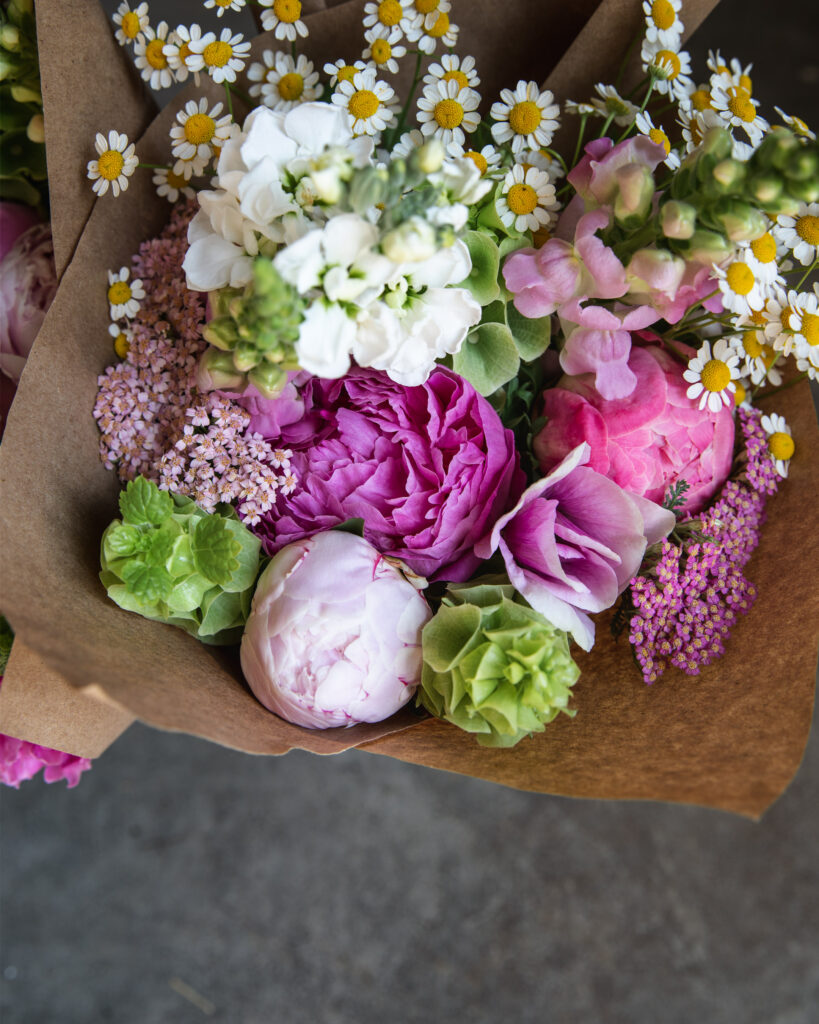
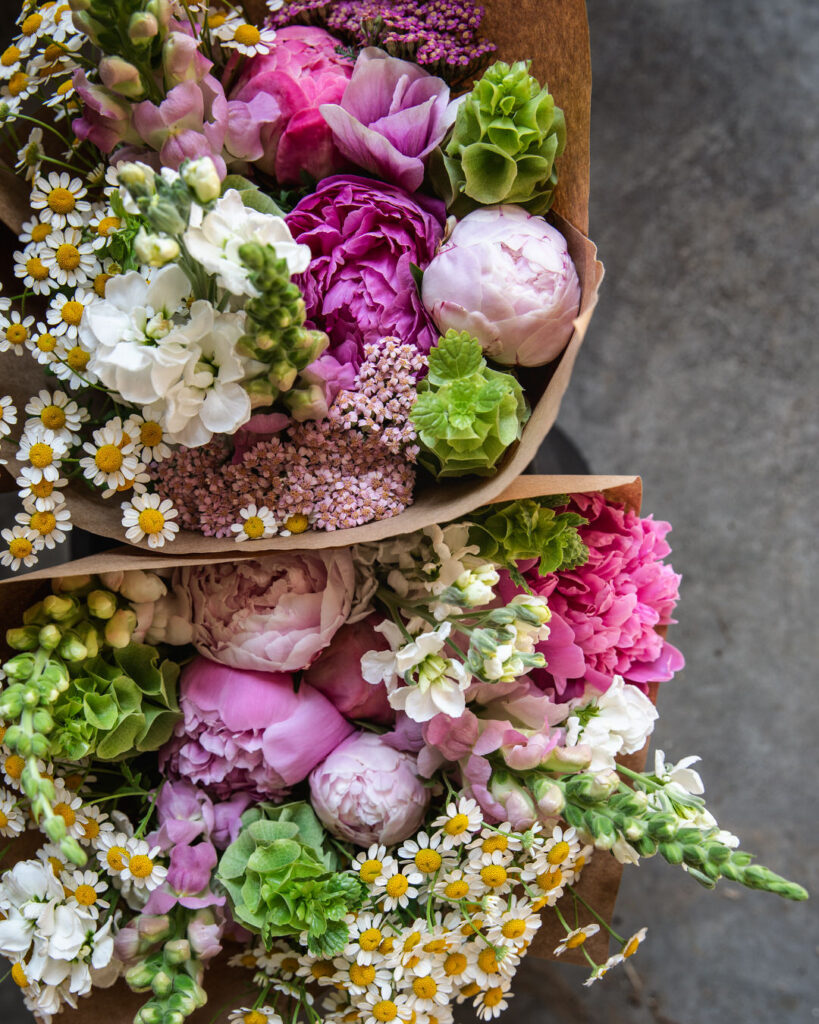
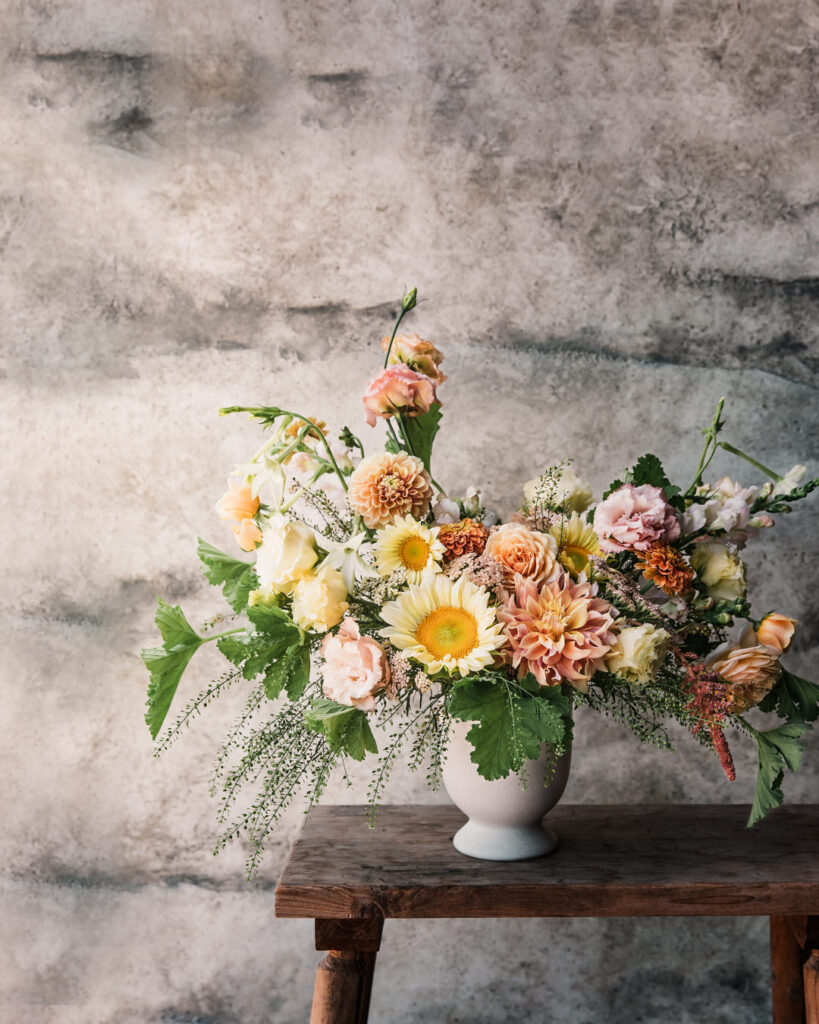
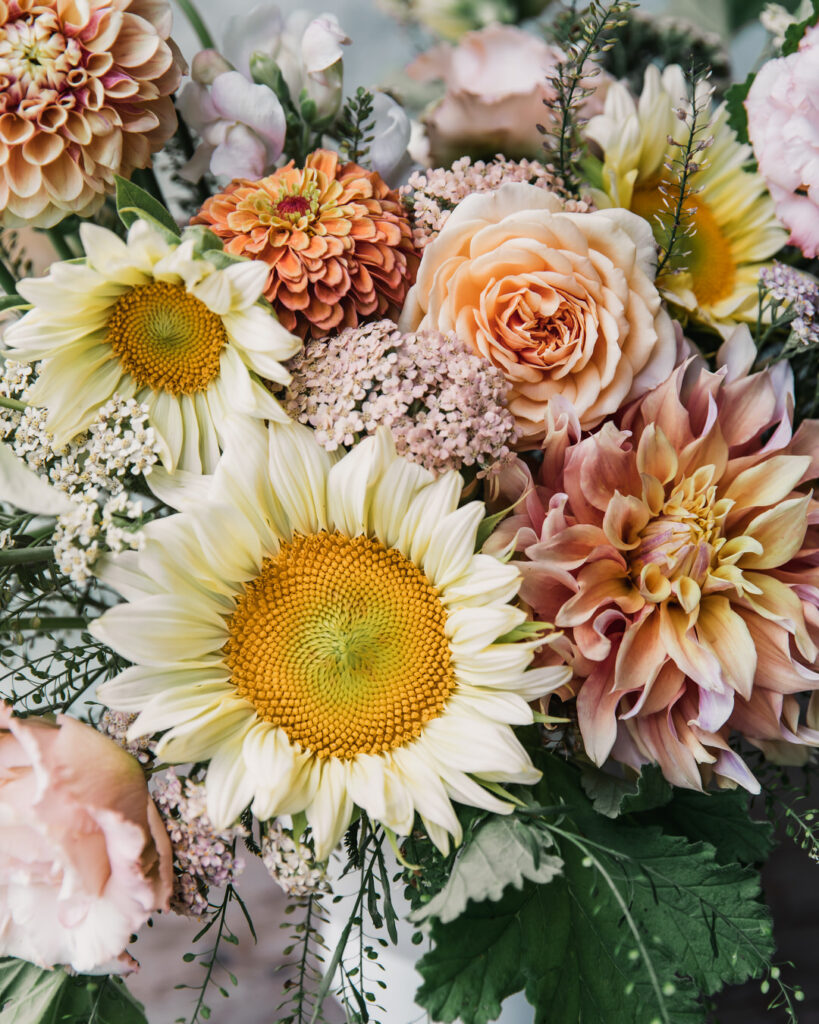
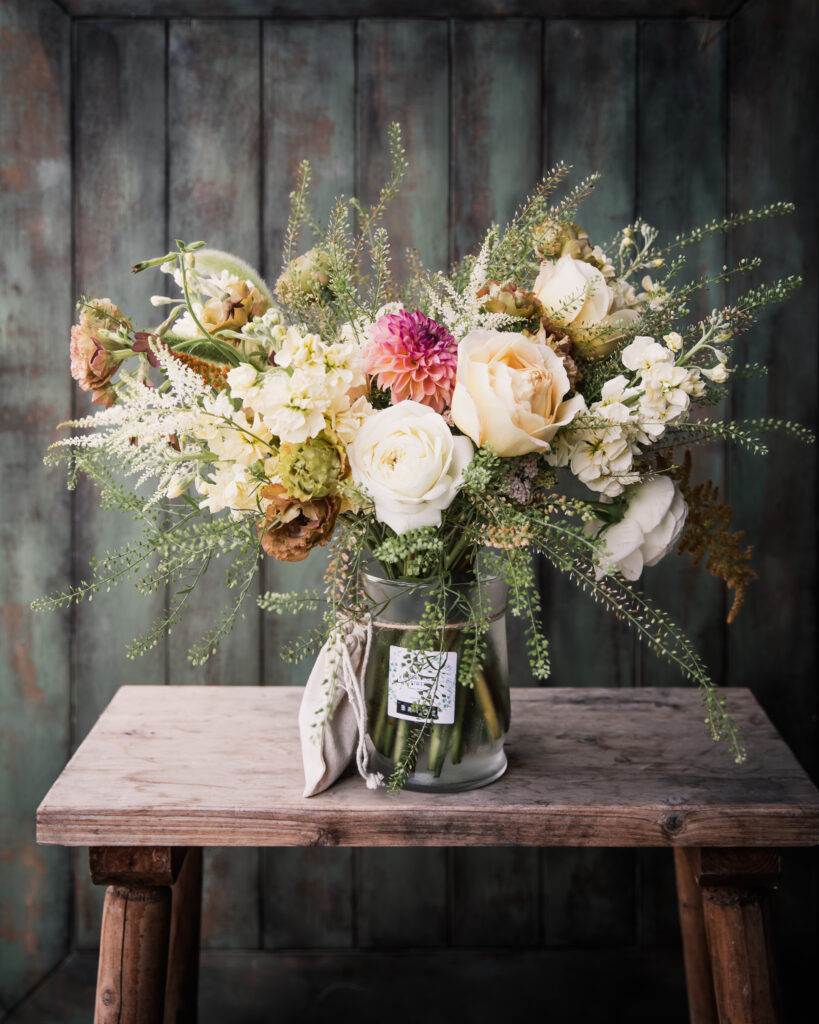
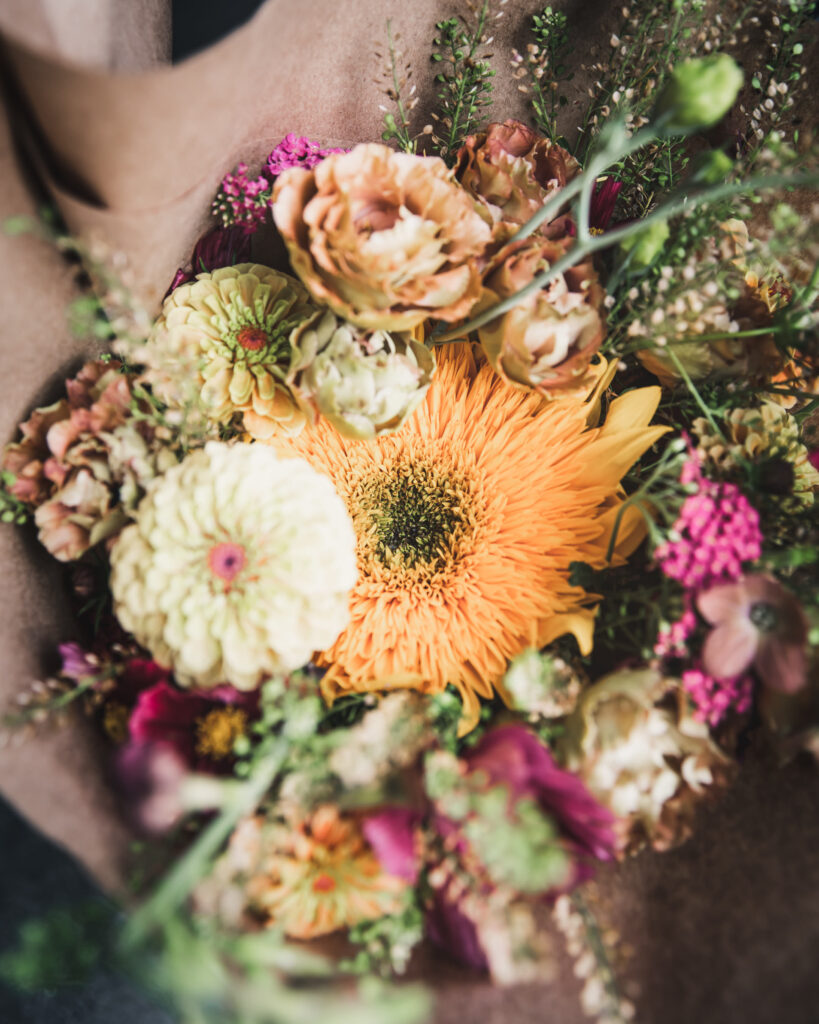
Wrap Up
OK, my friend, that is IT for this Plant Profile. What do you think? Did you find some useful nuggets? Is there anything that’s unclear or you wish I would have covered?
Have any questions or something you want to share with me or others? I know I say this ad nauseam, but I truly believe in the power of the collective and that we all have something unique and powerful to share, so please leave a question or share a comment below. We’re all better for it, and I thank you in advance!
Also, remember to use the buttons below to print a physical copy or save a PDF, so you can always refer back. Tip: use the find shortcut (Ctrl+F on a PC or Command+F on a Mac to search for any word or term in PDFs).
comments +